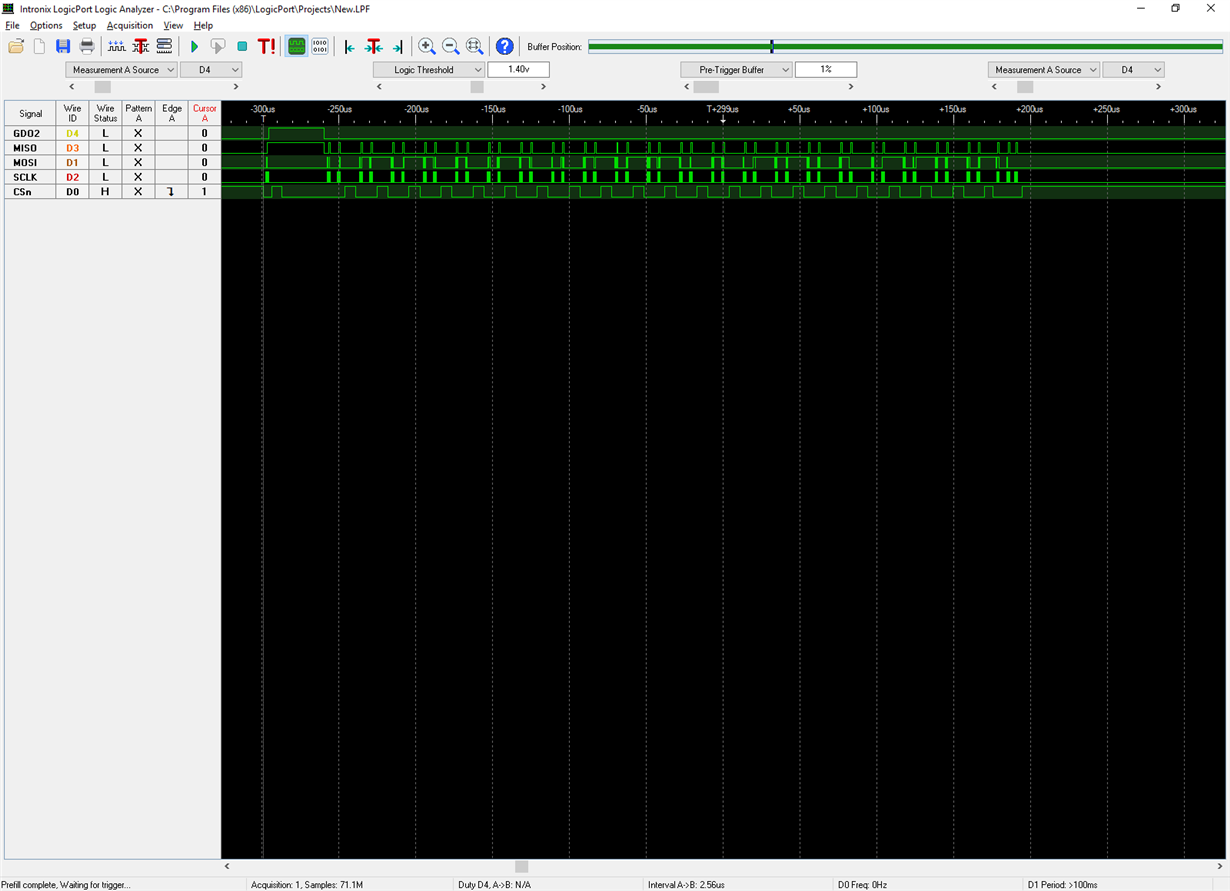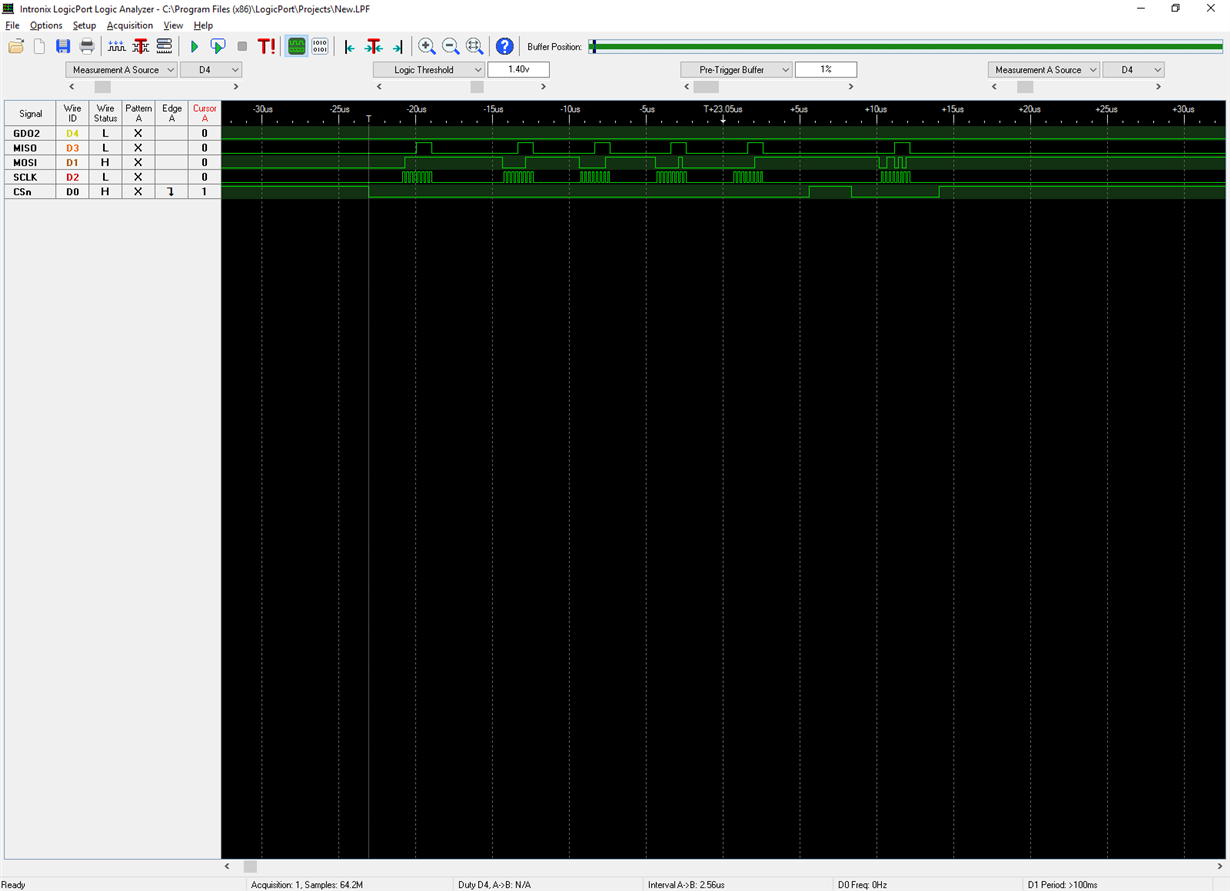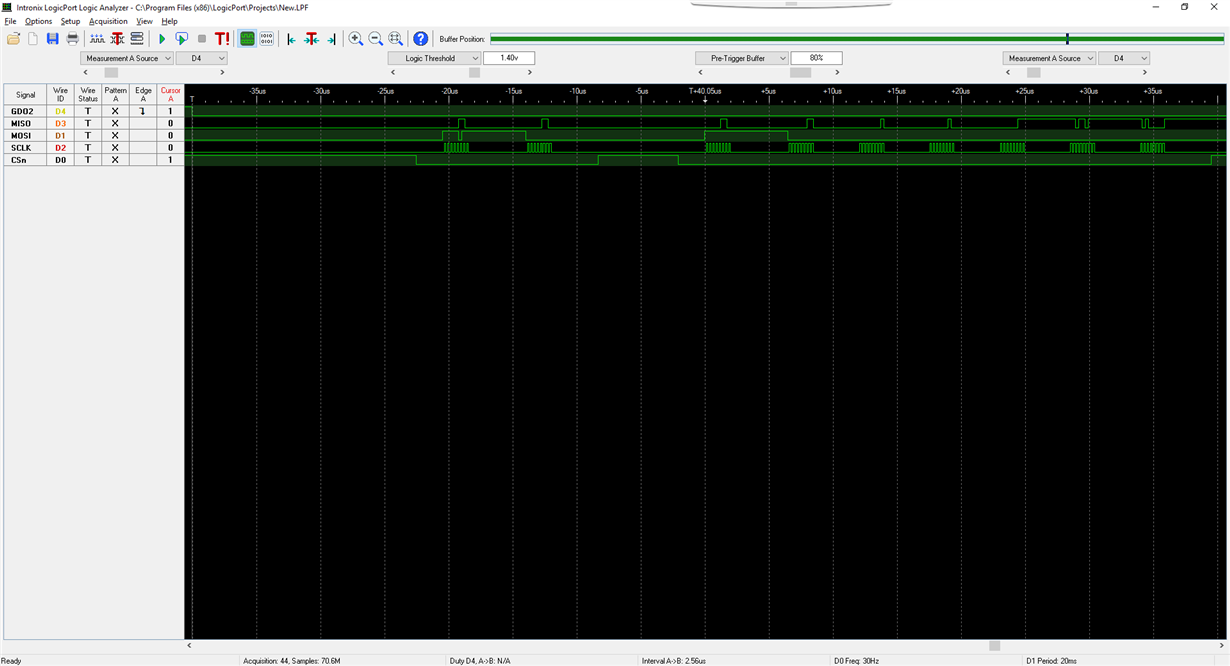The CC110L is in receive packet mode.... first time packet is received a "spurious" byte appears before the length byte. This "extra" byte appears to be the CRC_Status byte
of a previous transmission (it's always the same value). This never happens again until RX restart. CC110L is in IDLE state and RX FIFO has been purged before SRX command
is issued... ???




